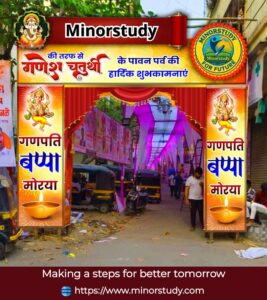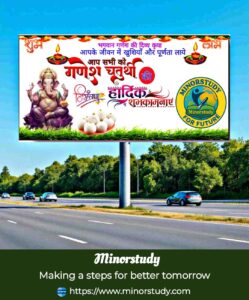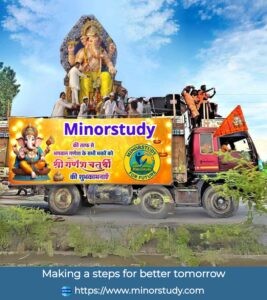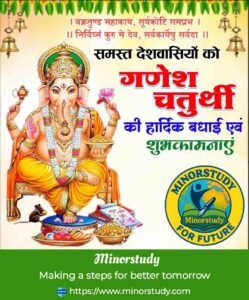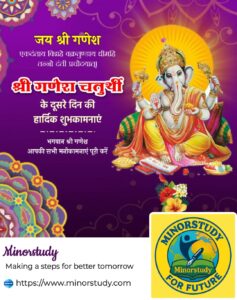Introduction
India is a land of festivals, and each one has a unique story, meaning, and cultural significance. Among them, Ganesh Chaturthi holds a very special place in the hearts of millions. It is not just a festival; it is an experience of devotion, art, music, and community bonding. Dedicated to Lord Ganesha, the remover of obstacles and the god of wisdom, prosperity, and good fortune, Ganesh Chaturthi is celebrated with grandeur across India and in many parts of the world.
- Introduction
- History of Ganesh Chaturthi
- Timeline of Ganesh Chaturthi
- Significance of Ganesh Chaturthi
- Daily Life Impacts of Ganesh Chaturthi
- How Ganesh Chaturthi is Observed
- 7 Powerful Reasons Why Ganesh Chaturthi Inspires Us
- Interesting Facts about Ganesh Chaturthi
- FAQs on Ganesh Chaturthi
- Ganesh Chaturthi’s Importance in Our Life and Society
- Wishing on Ganesh Chaturthi
- Conclusion
This festival blends mythology, spirituality, and modern traditions, making it relevant even today. In this article, we will explore the history, facts, timeline, significance, daily life impacts, FAQs, and more about Ganesh Chaturthi in a simple, human-friendly way.
History of Ganesh Chaturthi
The origins of Ganesh Chaturthi go back centuries, deeply rooted in Hindu mythology:
Mythological Origin: According to Hindu scriptures, Goddess Parvati created Lord Ganesha from sandalwood paste to guard her chamber. When Lord Shiva tried to enter, Ganesha stopped him, leading to a battle where Shiva severed Ganesha’s head. Later, realizing his mistake, Shiva revived him with an elephant’s head. Since then, Lord Ganesha is worshipped as the symbol of wisdom, remover of obstacles, and giver of prosperity.
Historical Reference: The earliest written mention of Ganesh Chaturthi celebrations dates back to the Puranas around the 4th–5th century.
Modern Revival: The public celebration of Ganesh Chaturthi was revived by Lokmanya Bal Gangadhar Tilak in 1893. He transformed it from a private household ritual into a grand public festival to unite Indians during the freedom struggle against British rule.
Thus, Ganesh Chaturthi is not only a religious celebration but also a festival that played a major role in India’s independence movement.
Timeline of Ganesh Chaturthi
4th Century CE – References in Puranic texts about worship of Lord Ganesha.
10th Century CE – The Chalukya and Rashtrakuta dynasties promote Ganesha worship.
16th Century CE – Maratha rulers encourage Ganesh festivities.
1893 CE – Lokmanya Tilak makes Ganesh Chaturthi a public celebration in Maharashtra.
20th Century CE – Festival spreads across India and among Indian communities abroad.
21st Century CE – Ganesh Chaturthi becomes a global cultural celebration, blending tradition with eco-friendly practices.
Significance of Ganesh Chaturthi
Ganesh Chaturthi is more than a religious festival. Its significance lies in many dimensions:
Spiritual Significance – Lord Ganesha is worshipped first before any auspicious work. The festival teaches surrender, devotion, and gratitude.
Cultural Significance – It represents Indian traditions of art, music, dance, and community bonding.
Social Significance – The celebration unites people beyond caste, religion, and social differences.
Economic Significance – Idol makers, artisans, decorators, and local markets thrive during the festival season.
Environmental Significance – In recent years, eco-friendly Ganesha idols have become a symbol of awareness about sustainable celebrations.
Daily Life Impacts of Ganesh Chaturthi
Faith and Positivity – The presence of Lord Ganesha idols at home spreads peace, hope, and positivity.
Family Bonding – Families come together to prepare sweets like modaks, decorate homes, and perform rituals.
Community Spirit – Large pandals (temporary structures) bring neighbors and societies together.
Learning Values – Children learn about traditions, responsibility, and the importance of spirituality.
Balance in Life – The festival inspires people to remove obstacles and focus on growth, just as Lord Ganesha symbolizes.
How Ganesh Chaturthi is Observed
Installation of the Idol – On the first day, a clay idol of Lord Ganesha is brought home or installed in public pandals.
Pranapratishtha – Rituals are performed to invoke life into the idol.
Daily Worship (Aarti & Bhajans) – Devotees offer flowers, fruits, and sweets, especially modak (Ganesha’s favorite).
Visarjan (Immersion) – On the last day (usually the 10th day), the idol is immersed in water, symbolizing Lord Ganesha’s return to Mount Kailash while carrying away misfortunes.
Eco-friendly Practices – Many communities now encourage clay idols and natural colors to prevent water pollution.
7 Powerful Reasons Why Ganesh Chaturthi Inspires Us
Symbol of New Beginnings – Reminds us to start fresh with courage and faith.
Teaches Unity – Brings people together, breaking social barriers.
Encourages Art & Creativity – Idols, decorations, music, and dance showcase rich cultural heritage.
Boosts Economy – Supports artisans, craftsmen, and small businesses.
Environmental Awareness – Encourages eco-friendly celebrations in modern times.
Strengthens Spiritual Growth – Daily prayers develop patience, devotion, and mindfulness.
Promotes Happiness & Positivity – Fills homes and streets with joy, music, and celebration.
Interesting Facts about Ganesh Chaturthi
Lord Ganesha is also called Vighnaharta (remover of obstacles).
The festival is celebrated for 10 days, but in some places, it lasts for 1.5, 5, or 21 days.
Mumbai’s Lalbaugcha Raja is the most famous Ganesh idol, visited by millions every year.
Modak, the sweet offering to Ganesha, is believed to be his favorite food.
The festival has now spread to countries like USA, UK, Canada, Australia, Singapore, and UAE.
FAQs on Ganesh Chaturthi
Q1: Why is Ganesh Chaturthi celebrated?
It marks the birth of Lord Ganesha, the god of wisdom, prosperity, and remover of obstacles.
Q2: How many days is Ganesh Chaturthi celebrated?
Traditionally, 10 days, ending with Ganesh Visarjan.
Q3: Which state is most famous for Ganesh Chaturthi celebrations?
Maharashtra, especially cities like Mumbai, Pune, and Nagpur.
Q4: What is Lord Ganesha’s favorite food?
Modak (a sweet dumpling filled with coconut and jaggery).
Q5: Can non-Hindus celebrate Ganesh Chaturthi?
Yes! The festival is universal in spirit and welcomes everyone.
Ganesh Chaturthi’s Importance in Our Life and Society
Ganesh Chaturthi is a festival that goes beyond religion. It represents:
Faith in Divine Power – Trusting that obstacles will be removed.
Cultural Identity – Preserving traditions for future generations.
Unity in Diversity – Celebrating together as one community.
Environmental Awareness – A call to protect nature while enjoying traditions.
Hope for the Future – Teaching resilience, optimism, and devotion in daily life.
Wishing on Ganesh Chaturthi
✨ “May Lord Ganesha remove all obstacles from your path, fill your life with wisdom, health, and prosperity. Wishing you and your family a joyful Ganesh Chaturthi!” ✨
Conclusion
Ganesh Chaturthi is not just a festival—it’s a celebration of faith, unity, culture, and positivity. Its history connects us with mythology, its revival inspires nationalism, and its modern observance promotes eco-consciousness.
In daily life, it teaches us to be hopeful, to start anew, to stay united, and to trust in divine strength.
From homes to pandals, from children to elders, Ganesh Chaturthi remains a festival that touches every heart. By celebrating responsibly and mindfully, we can keep this tradition alive for generations.
So, this year, when you chant “Ganpati Bappa Morya!”, remember—you’re not just celebrating a festival, you’re celebrating life, resilience, and wisdom.
